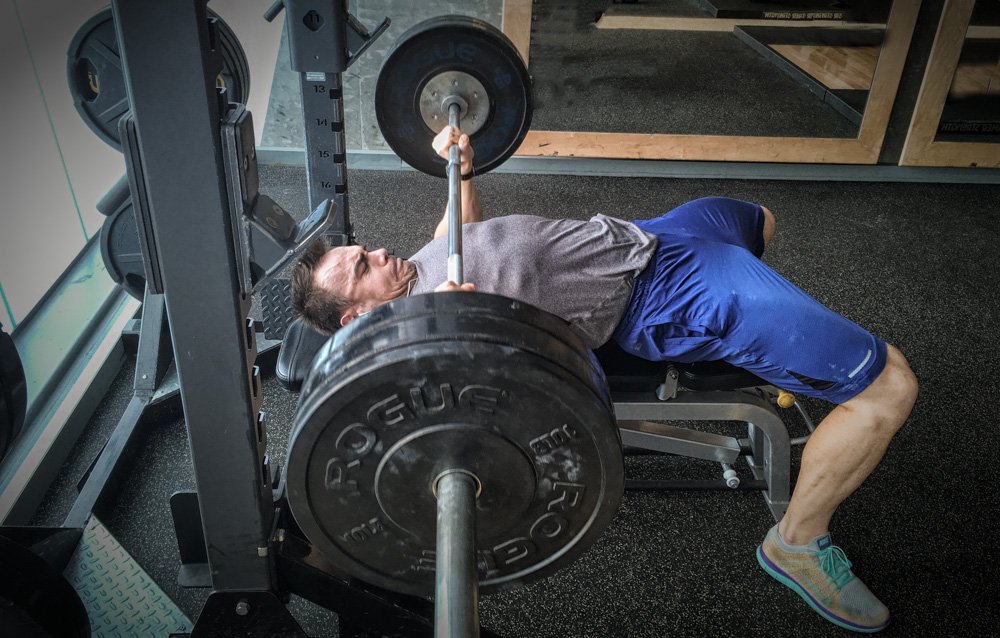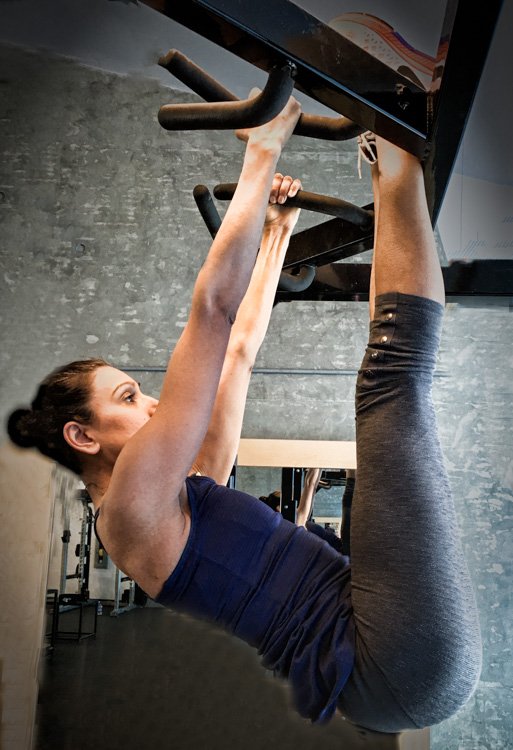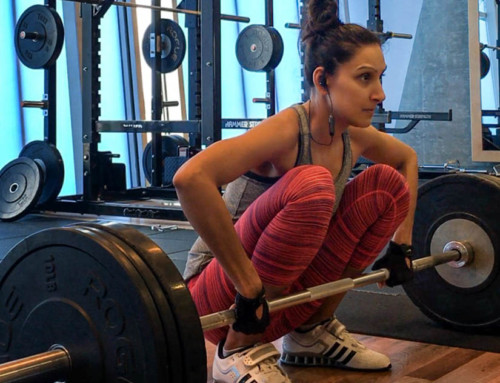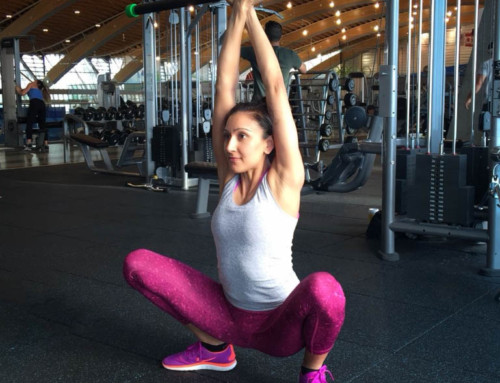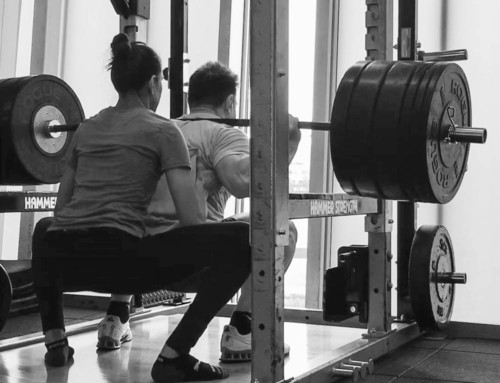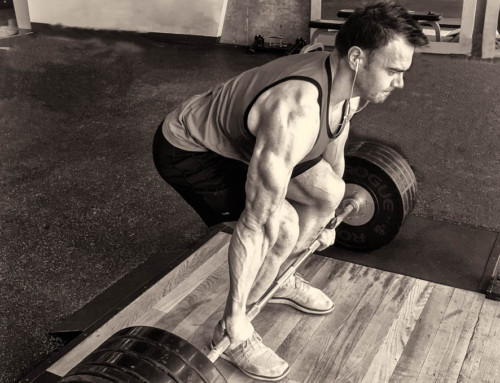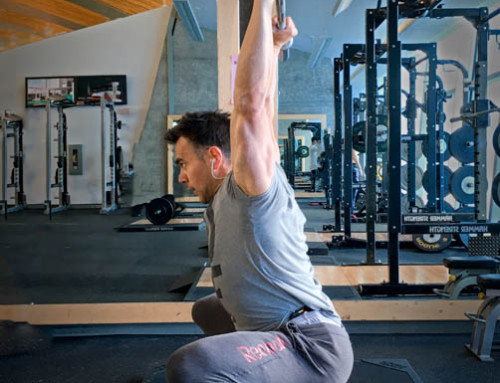If you’ve an avid reader of our blog, then you have likely noticed our references, in some shape or form, for exercising towards improving biomotor abilities. We’ve been asked on numerous occasions what exactly does this entail. Well, without further ado, this blog post will discuss these essential body movement skills.
Biomotor Abilities Simplified
Just like with anything in science, there is vast number of biomotor ability classifications. Each one referencing specific subsections of biomechanics—movement or structure—or, contractile process within muscle fibers, and so on. And again, regardless of all those different naming conventions and movement phrases, they all talk about the same things.
For the purposes of this article and our Science and Strength philosophy, we’ve broken down biomotor abilities into primary and secondary groups. But, before we get to that, let’s first clarify some of the misunderstandings on the topic.
Biomotor Skill vs. Ability
A skill is learned and developed, where’s an ability is simply our genetic disposition to perform that particular skill.
Biomotor Skill
Skill is “the effort” of your biomechanical potential. If this sounds confusing, allow us to explain. Most of this terminology is derived through sport specific research and biomechanics.
For example, learning a clean and jerk lift is not simply pulling the bar off the ground as fast as possible. The clean and jerk is made up of several compound upper and lower body movements that push and pull the bar in sequences, to complete each repetition. Things to consider when developing the clean and jerk lift are: position of the feet, legs, arms, torso, angles of joints involved; as well as timing—by repeatedly accelerating and decelerating the bar as it moves vertical along your body in stages. This exercise further involves numerous body systems including: energy, circulatory, nervous, endocrine and musculoskeletal, among others.
All these movements (and systems involved) within clean and jerk are skills that can be broken down and learned through practice. Skills greatly engage your mental capacity, as you have to think and rehearse these movements in your mind, in order to make instant decisions during in-progress lift. Furthermore, you have to consider timing transitions and maximizing on your physical assets in order to push the bar overhead.
Biomotor Ability
Motor ability is a genetic disposition to a specific skill. This is “the talent” of your biomechanical potential and theoretically determines maximum or ceiling result. These principles may be a factor for high, world class calibre athletic performance. This is the argument for Usain Bolts of sprinting and, Michael Phelps of swimming. In these Olympian categories, few milliseconds is often the difference between first and 20th place finish. Having said that, Bolt and Phelps relentlessly develop their skills (repeated effort) through regimented and gruelling training in order to not only achieve but, to maintain their level of physical performance.
For the rest of population made up of recreational athletes and fitness enthusiasts, biomotor ability is not a factor, as potential for improvement of any physical skill is extremely high. Therefore, we can rest assure that all of us can boldly pursue fitness excellence without fear of hitting ceiling ability.
Biomotor vs. Motor Performance
Another point to address is the usage of “biomotor” as supposed to “motor performance” when referring to ability. Numerous literature, from internet posts to physiology and biomechanics textbooks interchangeably use both terms. At Science and Strength, we view the body as an amazing machine that is fuelled through diet to produce biochemical reactions. These reactions may be internal (eg: protein synthesis) or external (eg: production of force) in nature. Our focus is not top end athletic performance or sport specific movement pattern development, but rather a continuous evolution of physical skill sets. Hence, the “biomotor” term fits Science and Strength philosophy regarding improving personal abilities through Stronger Leaner Faster Self.
The Ability Model
Now, there is no shortage of blog posts, articles, and research material that use one form of classification over another. Many popular articles through internet search engines state that there are anywhere from five to a dozen biomotor abilities. The reality being there are hundreds of biomotor abilities, each engaging its own movement pattern—requiring combinations of other abilities, body systems, or both. Details underlying all such derivatives as well as academic view points and arguments are beyond the scope of this article.
For our Science and Strength readers, we focus on five primary—foundation—and, four secondary—derivative—biomotor abilities. These abilities develop many physical movements and when practiced, improve our fitness and overall performance.
- The foundational biomotor abilities include (but not limited to): strength, endurance, speed, coordination, and flexibility.
- The derived biomotor abilities include (but not limited to): mobility, balance, power, and agility.
The Ability Breakdown
Strength, Endurance, Speed, Flexibility and Coordination are often referred to as primary (or foundation) biomotor abilities because, they are required to perform the bulk of movement patterns. We need strength to pick up a heavy barbell, endurance to walk 15 km (6.75 mi) and flexibility to reach down and touch our toes.
The secondary (or derivatives) biomotor abilities are often the crossings of primary ones along with contributions from specific body systems. Some of these derived abilities are very specific and are not readily used. On the other hand, some are popular forms of training and are becoming more mainstream, further improving personal fitness levels. For example, power is a combination of strength and speed; while mobility uses flexibility, coordination, and specific movement technique. Due to different combinations of abilities, body systems and specific techniques, many more derivative variations are possible in order to address and generate certain movements.
Foundation (Primary) Abilities for Stronger Leaner Faster You
Strength
Strength is an ability to produce large amounts of force. Strength is far more than having a heavy bench, squat or deadlift. This ability participates in developing numerous skill sets. The ongoing list includes: general strength, maximal strength, isometric strength, elastic strength, relative or absolute kind, explosive as well as endurance types; all refer to specific conditions to develop force. Many of these strength versions are derivatives between primary biomotor abilities.
This is an energy dependant ability and each strength version uses ATP derived through combined efforts of all three energy systems. At Science and Strength, we believe strength to be the main foundation biomotor ability that is practiced through numerous training methods. Hence, our training philosophy begins with STRONGER.
Endurance
Endurance is simply work capacity. It is an ability to perform work with set intensity (resistance or otherwise) over period of time. Endurance is often assumed to be associated with distance running. Though this is a type of endurance (aerobic), it is by far not the only kind. Endurance may depend on other abilities, such as strength, creating derived crossings within different skill sets. This depends on intensity and duration of the exercise. For example, bench pressing 100 kg (225 lbs) barbell for maximum number of repetitions during NFL combine test engages different endurance parameters than running an 8 km race (5 mi).
Endurance is also energy dependant, predominantly engaging one or the other pathway directed by intensity and work volume. In order to improve work capacity, the body adapts by increasing its oxygen uptake, metabolic flexibility, energy contribution and lean body mass. In a sense, the body becomes LEANER, which is the second statement of Science and Strength philosophy.
Speed
Speed is performing body movements as quickly as possible. This ability requires Central Nervous System (CNS) input to produce fast responses in order to perform tasks at hand. Our arms, legs and torso all contribute to how fast the body is able to move, accelerate, decelerate, anticipate, recognize and react with speed. Speed is also an energy driven ability predominantly using ATP-CP and glycolytic systems, while engaging various body systems to accomplish quickness. This is also an important ability in physiological development and is the FASTER component of the Science and Strength belief.
Coordination
Coordination is essentially the accumulation of small movements into big ones. This depends on synchronization of muscle fibers within specific muscle group (intramuscular coordination), as well as different muscle groups (intermuscular coordination) involving their associated limbs and joints to perform a specific movement and skill effectively and efficiently.
Coordination of muscle fibers improves CNS input through recruitment (quantity) of available motor units (MUs) and rate coding (quality) activation frequency, and synchronization. Neuromuscular system learns movements and skill sets involving coordination through practice. If this sounds familiar, it is, as we’ve covered most of these abilities through different training methods within previous articles.
Flexibility
We associate flexibility with range of motion. This biomotor ability engages muscle tissues, connective tissue and joints to optimally and effectively perform movements. Often different authors suggest various versions of flexibility. For us, we’ll focus on static and dynamic component.
- Static is just that, stretching body part without activating stretch reflex (golgi tendon and muscle spindles). This is a “traditional” form of stretching, where we hold a certain uncomfortable position for period of time. Here, the muscle is elongated through continuous stretch.
- Dynamic stretching stretches muscles through specific movements or motions. This is often a “warm up” form of stretching where we swing our legs and arms in large circles. Here, the muscle is stretched through motional elongation. Dynamic stretching engages stretch reflex mechanism where muscle is contracted and then relaxed. The purpose of dynamic stretches is to minimize or delay the activation of stretch reflex, resulting in greater work capacity.
Derivative (Secondary) Abilities
Technically we’ve already dabbled in derivative abilities during our foundation description, when discussing different versions endurance, strength and speed (eg: aerobic endurance, anaerobic endurance, speed strength, and so on). However, for simplicity, we’ll focus the derivative group on the most common and popular abilities below.
Power
Power is a combination of strength and speed. The goal is to perform a task or movement as fast as possible. Power engages nervous and muscuskeletal systems through mobility, balance, overcoming resistance (strength) as fast as possible. Power training recruits fast motor units (MUs) in order to generate required force in shortest time periods. There are different versions of power, often associated with specific sports. Throwing, jumping, sprinting and olympic weightlifting are all examples of sports that produce high power outputs. Numerous training styles exist that develop this biomotor ability. Power training is not just for athletic development, and is beneficial for anyone wishing to improve their fitness level.
Agility
Agility is a combination of versions of strength, speed and coordination. It’s an ability to accurately perform movements with speed, often accelerating (starting), decelerating (stopping), and changing direction. Agility is geared towards sport performance and links with power aspects in order to develop and perform specific and technical movements. However, anyone can adapt and benefit from agility drills as these styles of training noticeably enhance nervous and muscuskeletal systems.
Mobility
Some may think that mobility is a subsection of flexibility and coordination, and they would be right. But for us, we believe that mobility is an important biomotor ability, that is often overlooked. Mobility is flexibility in motion. It’s an ability that displays range of motion through joint angles during specific actions.
If you are wondering whether mobility is the same thing as dynamic flexibility, it is not. Dynamic flexibility focuses on delaying stretch reflex for greater work capacity during training session (eg: big circles for the shoulders). Mobility is improving joint angles in order to generate a more optimal and effective movement (eg: shoulder joint mobility during the snatch, and ankles and hip joint angles during the squat). Mobility is a big part of training, as many of us continue to struggle with properly executing exercises through full range of motion.
Balance
Balance is a mixture between precision and coordination. Balance often involves keeping the body upright or in certain stationary position. The body engages muscular (both isotonic and isometric contractions), visual (eyesight) and vestibular (equilibrium sensation through inner ear fluid) mechanisms in order perform tasks. This ability can further include flexibility and certain varieties of endurance and strength, depending on physical action or demand. Balance produces two types of reflexes:
- Righting—when surface is stable (eg: weightlifting or ice skating), or
- Tilting—when surface is unstable (eg: balance board training or surfing).
Final Thoughts
Biomotor abilities are body’s physiological potentials for physical performance. These potentials are practiced through various movements engaging numerous anabolic and metabolic processes, resulting in improved body’s physical performance. Different biomotor abilities exist, some general, others very specific. At Science and Strength, we focus on five fundamental and four derivative biomotor abilities.
The fundamental abilities are: strength, endurance, speed, coordination and flexibility. The derivative biomotor abilities are crossovers of various primary skill sets in order to generate specific movement or perform a task. These include: power, agility, mobility and balance. The biomotor abilities develop motor skills that are fundamental in improving personal health level and achieving fitness goals.
For more information on biomotor abilities and how they apply within exercise methods, check out training books Stronger Leaner Faster – Him and Stronger Leaner Faster – Her.
Please help us pass on our message of Stronger Leaner Faster Self – Share this Post! Thanks 🙂

